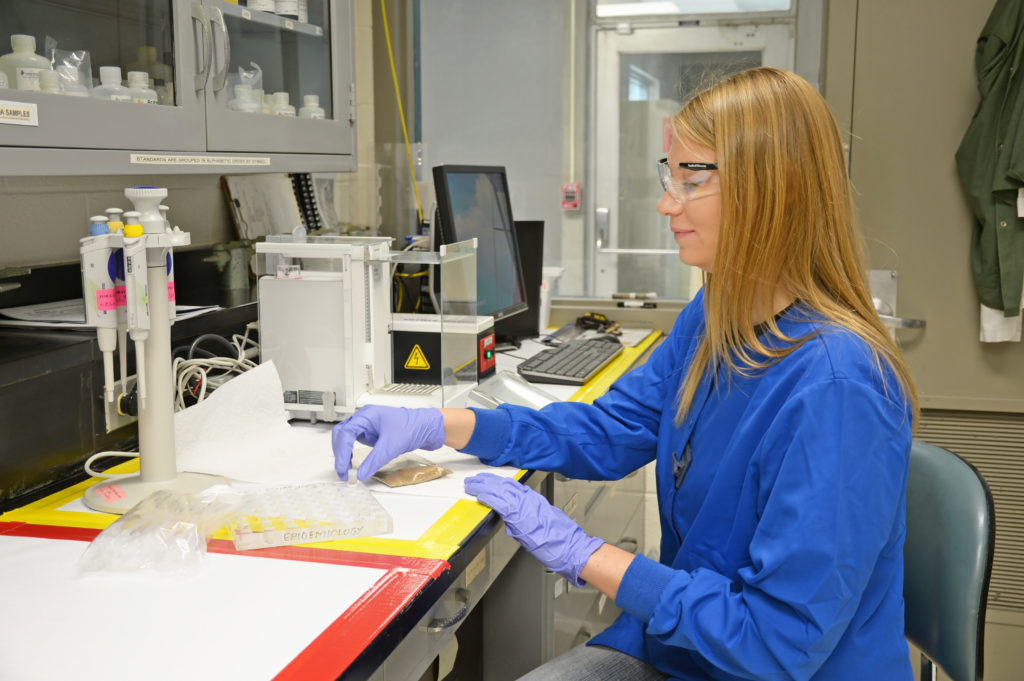
Epidemiology is the study of how often diseases occur in different groups of people and why. Epidemiological information is used to plan and evaluate strategies to prevent illness and as a guide to help manage patient treatments.
In analytic epidemiology — the research and studies measuring the association between a particular exposure and a disease — specific hypotheses about the incidence, distribution and control are investigated through collection and analysis of biological markers.
With more than 25 years of collaborative research experience in the analysis of blood, urine and toenail clippings, scientists at MURR have made possible a greater understanding of the role of essential trace elements (e.g., iodine and selenium) and potentially toxic trace elements (e.g., arsenic and mercury) on human health and the environment.
As an example, in 2007, more than 3,000 toenail clippings were analyzed at MURR to study the link between dietary trace elements like selenium, toxic elements, and chronic diseases such as cancer, coronary heart disease and diabetes.
The study found that the selenium concentration in the toenail clippings varies by geography and is influenced by smoking, supplement use, gender and age. Additionally, the concentration of selenium in the nails is dependent on dietary intake. The study also identified an inverse relationship between selenium levels and predicted cancer mortality in men and women. Case-control studies have indicated selenium’s protective effect against prostate and bladder cancer.
- Neutron Activation Analysis (NAA) of fluoride in toenail parings has been used to study fluoride hypothesis in osteoporosis.
- Epiboron NAA has been used to analyze iodine-127 in toenail specimens to study thyroid cancer risk factors.
- Chromium status at baseline, as measured by the toenail biomonitor using NAA, has been found to be lower in diabetics and lower still in diabetics with heart disease, compared to healthy controls.
- Further utilizing the toenail biomonitor, the theory that even relatively low-levels of arsenic in drinking water increase the risk of non-melanoma skin, lung and/or bladder cancer is being studied.
- The influence of glutathione S-transferase M1 (GSTM1) on methylation of inorganic arsenic in drinking water and potential change in the toenail biomonitor for arsenic has been studied in a small New Hampshire population.
- Stable-isotope Ca-46 and Ca-48 measurements on the effect of vitamin D and calcium on percent-true calcium absorption in children with juvenile rheumatoid arthritis are also being investigated.